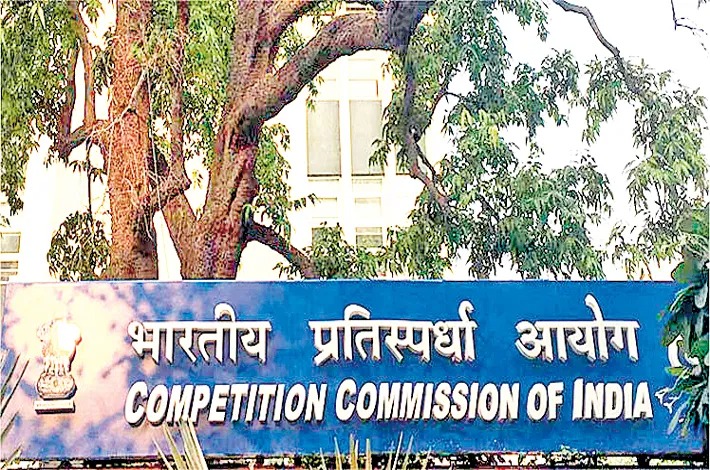@JUDGMENTTAG-ORDER
V.R. Krishna Iyer, J.@mdashThe plaintiff-revision petitioner seeks to challenge the order of the Munsiff''s Court holding that the court-fee paid by him was insufficient and that he should pay court fee u/s 30 of the Court Fees and Suits Valuation Act instead of u/s 43 of the suit Act. The appropriate court-fee to be paid has to be determined on the allegations in the plaint. In this case the suit is for recovery of possession of a room from the 1st defendant on the ground that the room is part of a building leased to the plaintiff by the State Bank of Travancore on a monthly rent of Rs. 300/-. The plaintiff valued the prayer for recovery at Rs. 780/- computed on the basis of one year''s rent apportioned by him for the room, i.e., at the rate of Rs. 65/- per mensem. The 2nd defendant was the special officer of the Kottayam Orient Bank and on behalf of the said Bank leased the building to the plaintiff. The rights of the Kottayam Orient Bank have ultimately vested in the Kottayam District Co-operative Bank although the 2nd defendant is not seen impleaded as representing the lessor as such. The plaint proceeds on the footing that defendants 1 and 2 are friends, that the building leased to the plaintiff really takes in the room described in the schedule to the plaint which is now in the occupation of the 1st defendant and that the 1st defendant has got into possession either because the 2nd defendant had no clear idea of the extent of the building demised or because he was negligent and indifferent or because of the 1st defendant''s influence over the 2nd defendant or for some other reason. On these averments the lower court held that Section 30 of the Kerala Court Fees and suits Valuation Act, 1959 applied and direct court fee to be paid on the market value of the room fixed at ten times the annual income from the building scheduled in the plaint. The learned Munsiff concluded:
In this case, the plaintiff alleges that the annual income from the building scheduled is Rs. 780 and the market value has to be fixed at ten times of such income or rental from the scheduled building. If that be so, the plaintiff has to value the suit at Rs. 7,800 and pay court fee on that. For the above said reasons, I find that the plaintiff has to value the suit at Rs. 7,800/- and pay court fee on that amount. The plaintiff will file a revised valuation statement and pay court fee on this amount.
It is contended by counsel for the revision petitioner that the appropriate section that applies to the case is Section 43(2) of the Act since, according to him, the suit is by a tenant for recovery of possession of a part of the subject of demise. He relies upon a ruling reported in Easo Chakko v Karola Geeyarughese (xxx T.L.R. 222) and urges that even if the defendant is a stranger, a plaintiff-tenant can avail himself of section 43 of the Act. He has also referred me to two decisions of the Madras High Court reported in
2. Speaking broadly, court fee is a fetter on the assertion of a right or the seeking of a remedy by a party, although a person who is unable to pay court fee may thereby be deprived of the equal protection of the laws notwithstanding the considerate treatment extended, under Order XXXIII C. P. C., to paupers. That question, however, does not arise here, but I am persuaded to take the view that the provisions of the law of court-fees which are ameliorative in the sense of enabling a party to pay a lesser court fee should be interpreted liberally. A tenant, who has only a lesser right in property, cannot justly be called upon to pay court-fee on the market value of the entire rights in the property if he has been wrongfully kept out of possession by a stranger; for, the tenant''s right itself is limited and he should not be forced to pay the same court-fee as a full proprietor seeking the same remedy of recovery of possession. Indeed, it is this aspect of injustice which has led to the enactment of the special provisions of Section 7(4) of the Kerala Court Fees and Suits Valuation Act 1959 whereby the market value of the property shall be deemed in such cases to be the value of the restricted interest of the plaintiff as indicated in that sub-section. In spite of such liberal approach to the existing provisions of the Court-Fees Act-whatever may be the propriety of levying heavy court-fee from a citizen before he is allowed to enter the shrine of justice - the plaintiff in this case cannot succeed in the present state of his allegations. It is reasonable to hold that a suit by a tenant against his landlord for recovery of possession will come u/s 43 of the Act. It is equally reasonable to hold that if a landlord has instigated another person to enter the demised premises or has collusively inducted another into the property, a suit by the tenant to throw out such a stranger who has colluded with the landlord and got into possession may really come u/s 43 of the Act, because the stranger is on the land with the connivance of the landlord. A slightly different approach has been made, but substantially leading to the same conclusion, by Mudholkar J., (as he then was) in an unreported ruling. The learned Judge observed:
"Here the basic allegations are that the applicant became a tenant of the field and that he was illegally evicted there from by the landlord. Upon these allegations the applicant is clearly entitled to value the relief for possession u/s 7(xi)(e) of the Court-fees Act. The decision in -
In the ruling reported in AIR 1948 Mad 409 where the new lessee from the Tanjore Municipal Council brought a suit to eject the earlier lessee, the court was called upon to decide whether court fee should be paid on the market value of the property u/s 7(v) (of the Central Act) or whether the lesser court-fee in a suit between the landlord and tenant u/s 7(xi) of the Act was sufficient. Bell J. observed therein:
It would, in my opinion, be unjust to hold that he (lessee) may bring the action only under the former clause. Where a person obtains a lease, say, of a dwelling house, from a lessor and finds when he desires to take possession that some stranger is there, it would be monstrous to make him file a suit on the basis that he was doing anything else but stand in the shoes of the lessor. If the landlord can bring the suit cheaply under Cl (ii)(cc), why should not be lessee be entitled to do the same?.........It would be in my opinion a most artificial approach to the Court Fees Act to say that a valid lessee could only exercise his undoubted rights under S. 108, T. P. Act, at great cost under S. 7(v), Court-fees Act, while the landlord, if he chose to bring the same suit in ejectment, could avail himself of S. 7(xi)(cc) I, therefore, hold that the latter clause applies in the circumstances of this case.
The decision in XXX T. L. R. 222 also takes the view that if the landlord has instigated a stranger or colluded with him against the tenant a suit by the latter for recovery of possession either against the landlord or against those whom he has wrongfully brought into the property would really be in the nature of a suit by a tenant against the landlord for recovery of possession. In the present case, I would have been inclined to take the view that the court-fee paid was correct if there was a clear allegation that the 1st defendant had got into possession at the instance or under the instigation of or in collusion with the landlord. There is no such allegation in para 13 of the plaint, to which my attention was drawn by the learned counsel for the petitioner. However, it is open to the plaintiff to amend his allegations if he has a case that the 1st defendant got into possession in any of the manners indicated above. If he does so, of course the trial court will levy court-fee only on the amended plaint. As it is, the court-fee paid is insufficient.
3. There is some error in the computation of court-fee made by the Munsiff. The plaintiff in this case is a tenant and therefore is one who has a restricted or fractional interest in the property which is the subject-matter of the suit, within the meaning of Section 7(4) of the Act. In that view, court fee has to be paid u/s 30 read with Section 7(4) and not Section 7(3) of the Act. The lower court has, therefore, to ascertain the value of the restricted interest of the plaintiff in accordance with Section 7(4) of the Act, The net income available from the property has to be fixed or has to be stated by the plaintiff and the net income derived by the owner of the restricted or fractional interest viz., the plaintiff, has also to be fixed or stated by him. Ordinarily, the total income from the property minus the rent that the tenant has to pay to the landlord will represent the tenant''s income. Therefore, the lower court has to direct the plaintiff to submit a valuation furnishing data u/s 7(4) of the Act and then proceed to fix the correct court fee u/s 30 of the Act. With this direction, I dismiss this civil Revision Petition. No costs.

